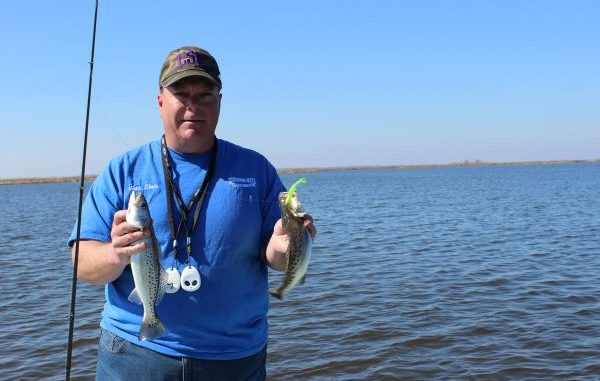
Chris Danos is a dyed-in-the-wool cork fisherman when throwing artificial baits. And his results in putting fish on the cleaning table more than offset any thoughts that he should radically change his approach.
But there’s a group of anglers about which he’s always been more than a little curious in the springtime around the bays and open water fringe area of Pointe a la Hache.
Crankbaits are their weapon of choice. And they break just about every rule of trout fishing.
But Danos said the results of these skilled anglers more than speak for themselves.
“I never have really learned how to do it, but they catch their limit just about every time it seems,” the guide said. “And they’re not just the school trout that we catch a lot of — they put some really nice looking fish in the boat.”
Trout, as a general rule, gather in much more open water than redfish. Crankbait anglers fish the lures much like a redfish angler or even a bass fisherman: Long casts almost to the bank of likely spots and a steady retrieve of a shallow-running crankbait is the basic technique.
“They basically throw it all the way to the bank, and then retrieve it so it’s only 6, 7, 8 inches under the surface,” said Danos, who was quick to point out that the crankbaits aren’t the ones that create a visible wake just a few inches under the surface. “They look for the crankbaits that will get shallow, but not too shallow.
“I know some of them will use fingernail clippers to take some of the bill off of the bait so that it doesn’t dive as much.”
Since we’re not talking about Florida-clear water, lure color tends to combine with the vibration given off by the rhythmic wobble of the bait to make a big difference in the fish actually picking up the location of the crankbait.
Rather than looking exactly like a pogie or mullet, a crankbait’s color is in step with getting a fish’s attention given light penetration and color of the water. Danos said a green/orange combo, as well as a red/white mix, are favorites that these anglers are willing to give up.
And those pairings fit in with the theory of getting the fish’s attention instead of imitating the baitfish precisely.
Danos said the same basic rules apply to crankbait fishing as anything else: find clean, moving water around oyster beds — oyster beds serve as a terrific filter for otherwise iffy water — and keep the bait in the water.
Though there are certainly closely guarded secret areas where the cadre of crankbait specialists have caught fish year after year, Danos said finding the combination of bait, clean water and water movement is the same.
“They get around the small islands in this area and fish all around them,” he said. “It’s a lot of casting — a lot more casts than a cork. But they do pretty well.
“And beating the banks with a bait like that you’re always going to hang a few redfish.”
